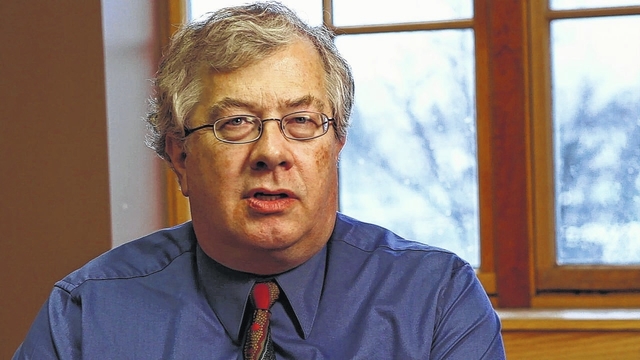
ANNA — Rumley, Ohio, is one of those obscure spots on the map that holds little meaning to anyone outside a 10-mile radius, the radius in this case being in the flatlands of western Shelby County. The Rumley of 2016 is a wide spot on Hardin-Wapakoneta Road, populated by a half-dozen homes and the Rumley Baptist Church.
But for over three decades in mid-19th century Rumley was thriving settlement that sported a sawmill and a number of other businesses, all of which served a population of about 500 people, most of whom were black.
Anna native Dr. Roy Finkenbine has spent an academic lifetime researching the black abolitionist movement prior to the Civil War. Over the past several decades, he and his colleagues have assembled the Black Abolitionist Archive, a compilation of over 800 speeches and 1,000 editorials written in the ante-bellum period by black Americans fervently denouncing slavery and calling for its immediate end.
After stints at Florida State, Murray State, and Hampton, Finkenbine took his work to the University of Detroit Mercy in 1996, and he remains there today to continue his research. Detroit Mercy obtained the Black Abolitionist Archive several years ago and the university serves as the curator of the collection (https://research.udmercy.edu/find/special_collections/digital/baa/).
As an Anna native, it was only natural that Finkenbine showed a particular interest in the abolitionist movement in west central Ohio. Small black communities such as Rumley, he said, were not uncommon in Ohio in the mid-19th century. Prior to the Civil War, these settlements were hotbeds of abolitionist sentiment and most, if not all, were stops on the Underground Railroad. While hard evidence has yet to be located, Finkenbine is quite sure that any number of escaped slaves made their way north via a whistle-stop at Rumley.
“In fact, it would have been unusual if Rumley hadn’t been a center of activity for the Underground Railroad,” Finkenbine said.
But searching for proof of such is a very tough gig indeed.
“One of the frustrating things is trying to come up with the documentation,” Finkenbine said. “You have to remember (the Underground Railroad) was secret and highly illegal.” Any records or ledgers that were kept as part of the Railroad’s activities were very often burned as not to be discovered, he continued. “They were very nervous about breaking the law, especially those who were posing as free blacks.”
Following the Civil War, Rumley continued to serve a mostly black community until the 1870’s, when the Industrial Revolution hit full stride and decimated the populations thousands of villages and settlements — across all demographics — with the lure of higher wages in the urban centers.
The Anna District Historical Society has invited Finkenbine to give a lecture on his years of research at the restored Wenger School House on Amsterdam Road, Anna, which celebrated its 150th anniversary in 2015. The presentation is entitled “Rumley: An African American Community in Nineteenth-Century Ohio”.
Finkenbine’s lecture is scheduled for Tuesday, April 26, at 7:30 p.m. Seating is limited and only RSVPs will be honored. More information on the presentation can be obtained from Kathie Eshleman of the Anna District Historical Society at 937.394.7251.


